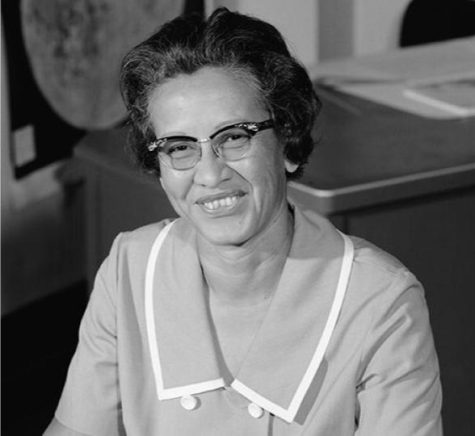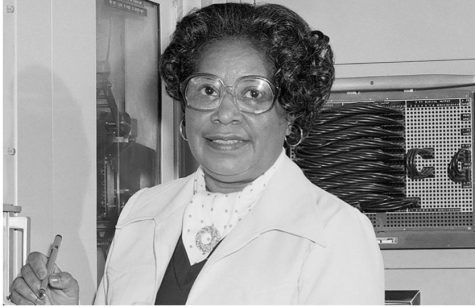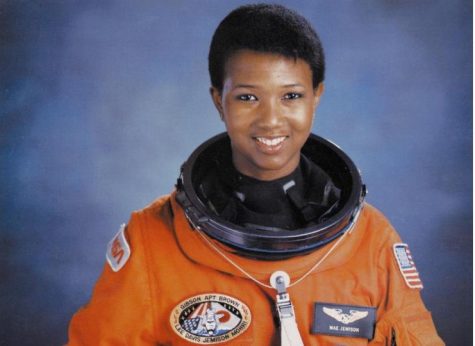Black Women Who Impacted the Advancement of Space Discovery
March 3, 2023
Katherine Johnson Mary Jackson Mae Jemison
Photo courtesy of Bio. Photo courtesy of NASA Photo courtesy of National
Countless Black women have influenced NASA and space exploration, yet most don’t get the credit or the appreciation they deserve. For years, women involved at NASA contributed to research and mathematics but had their work published under a male coworker’s name, or were minimized to co-authors. Katherine Johnson, Mary Jackson, and Mae Jemison are all significant figures in the realm of science and space exploration.
Katherine Johnson was born in 1918. She graduated from high school at 14, then took classes at West Virginia State College, which she graduated from at 18. According to Actively Learn, she was one of the first Black women to get a master’s degree in both chemistry and math. After graduation, she became a math teacher for years, before being hired by the National Advisory Committee for Aeronautics (NACA) in 1953, where she worked under Dorothy Vaughn, a brilliant mathematician, the first African-American manager in NASA, and the head of NACA’s West Area Computing Unit. Shortly thereafter, Vaughn assigned her to work at the Maneuver Loads Branch of the Flight Research Division. This allowed her to work on trajectory analysis for the 1961 Freedom 7 with astronaut Alan Shephard, as well as John Glenn’s 1962 flight. According to NASA, Glenn requested for Johnson to confirm the numbers before taking off, not feeling safe blindly trusting IBM’s numbers. NASA wrote, “‘If she says they’re good,’ Katherine Johnson remembers the astronaut saying, ‘then I’m ready to go.’” Johnson went on to author and coauthor 25 reports, which is the most recorded from any Black person. She received the highest civilian honor in the United States, the Presidential Medal of Freedom, from President Obama in 2015. Johnson passed away in 2020 at 101 years old.
Mary Jackson was born in 1921. She graduated from George P. Phenix Training School of Virginia “with highest honors” (scientificwomen.net). Jackson then graduated from Virginia’s Hampton Institute in 1942 with bachelor’s degrees in both physical science and mathematics. She was a math teacher for a year before beginning work in NACA’s Langley Research Center in the West Area Computing Unit. She was then offered a job working with Kazimierz Czarnecki, a Polish engineer who encouraged her to become an engineer, on a “4-foot by 4-foot Supersonic Pressure Tunnel, a 60,000 horsepower wind tunnel capable of blasting models with winds approaching twice the speed of sound” (NASA). He recommended she be an engineer, but she needed to take a few classes in engineering first. She did, after convincing a judge to allow her to take classes in an all-white school. Jackson became the first Black female engineer at NASA in 1958. She readily moved up in the ranks until she couldn’t anymore, due to quiet discrimination. In 1979, she returned to Langley’s Research Center and became Langley’s Federal Women’s Program Manager. NASA wrote, “[Jackson] worked hard to impact the hiring and promotion of the next generation of all of NASA’s female mathematicians, engineers, and scientists.” Jackson also received rewards, her most notable being the Apollo Group Achievement Award and Langley’s Volunteer of the year in 1976. Jackson passed away in 2005, at 84 years old.
Mae Jemison was born in 1956. She graduated from Morgan Park High School in Illinois at 16 years old, then attended Stanford University, where she was the President of the Black Student Union. She graduated in 1977 with two bachelor’s degrees: “a Bachelor of Arts degree in African and African-American studies,” according to womenshistory.org. She then went to Cornell University and graduated with a doctorate in medicine. Jemison first applied to NASA in 1985, but in the year following, the Space Shuttle Challenger exploded, and NASA didn’t take any applicants. In 1987, she applied again and was one of the fifteen (out of two thousand applicants) people selected. Her first mission was in 1989, where she was a Mission Specialist with the STS-47 crew, as stated by womenshistory.org. In 1992, she was the first African-American woman in space, as Jemison and 6 others made 127 orbits of the planet on Endeavor. She is in both the International Space Hall of Fame and the National Women’s Hall of Fame. After being an astronaut for 6 years, she left to form the Jemison Group, which is “a consulting company that encourages science, technology, and social change” (womenshistory.org). Jemison also started multiple organizations, such as TEWS and Dorothy Jemison Foundation for Excellence. In 2001, Jemison wrote her first book, Find Where the Wind Goes, which highlights her life in a children’s book. According to womenshistory.org, she is currently “leading the 100 Year Starship project through the United States Defense Advanced Research Projects Agency (DARPA)”.
Countless other women have made an impact on NASA and how the world views space who have not been mentioned here. Black women, in particular, have been disproportionately marginalized and overlooked. However, they have made some of the most significant contributions to society. Katherine Johnson, Mary Jackson, and Mae Jemison are only three examples of these contributions, and time will reveal numerous more who were previously overlooked.



